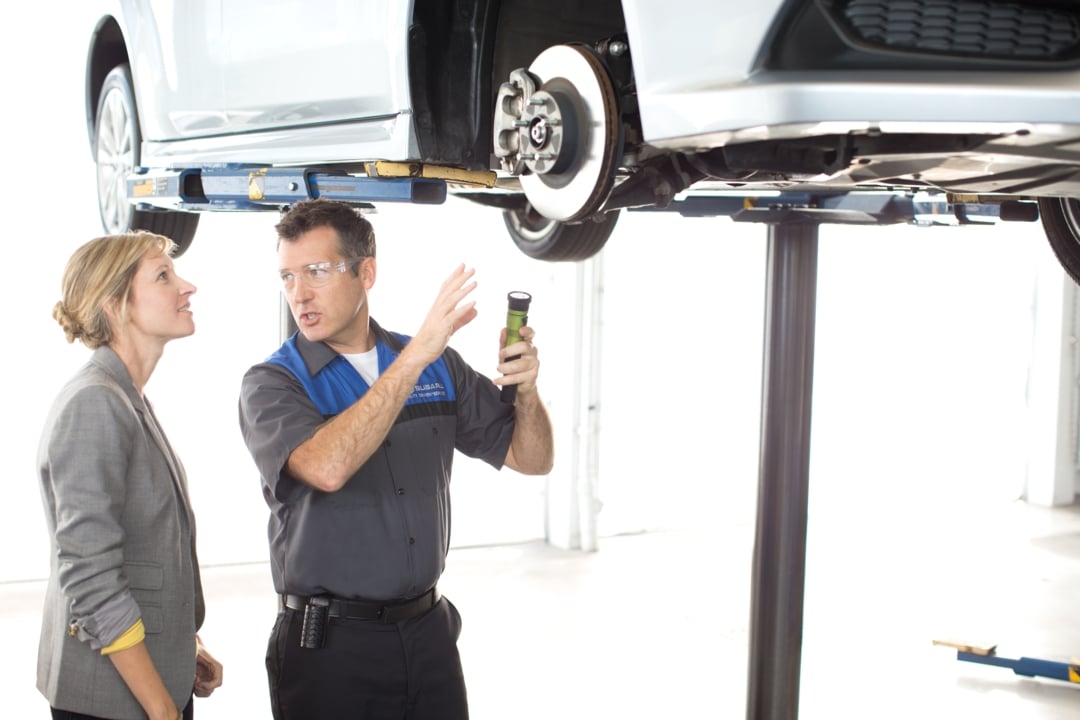Frequently Asked Service Questions
Answering the Most Common Subaru Service Questions
Here at the North Reading Subaru, we understand that your Subaru is more than just a car - it's a reliable companion that gets you where you need to go. That's why our dedicated service center is here to keep your Subaru running smoothly and why we're answering the most common service questions.

How often should I bring my Subaru in for service?
The answer depends on several factors, including your driving habits and the specific model of your Subaru. However, as a rule of thumb, we recommend bringing your Subaru in for an oil change and tire rotation every 10,000 miles or six months, whichever comes first. This helps to keep your engine running efficiently and your tires wearing evenly, which can extend the life of your vehicle.
What kind of maintenance does our service center offer?
At our service center, we offer a wide range of maintenance services to keep your Subaru in top condition. This includes oil changes, tire rotations, brake service, wheel alignments, and more. Our technicians also use only genuine Subaru parts, which are specifically designed for your vehicle and help to ensure optimal performance and longevity.
Can I trust a dealership service center with my car?
Yes! Our technicians are highly trained and certified to work on Subaru vehicles. We use state-of-the-art equipment and diagnostic tools to accurately identify and fix any issues with your car. Plus, we offer a waiting area with free Wi-Fi and refreshments so that you can relax while we take care of your Subaru.
What should I do if my Subaru needs urgent repairs?
For Subaru owners in Lawrence, we understand that sometimes unexpected issues can arise. If you find yourself in this situation, don't hesitate to give us a call or bring your car to our service center. We offer same-day service for many repairs, and our technicians will work efficiently to get your Subaru back on the road as quickly as possible.
How can I schedule a service appointment at North Reading Subaru?
We make it easy to schedule service online or by phone. Simply visit our website, visit our service center button or give us a call during business hours. Our advisors will work with you to find a convenient time that fits your schedule.
Do you offer loaner vehicles when my Subaru is being serviced?
Yes. If you need a loaner car while your Subaru is being serviced, simply let us know when you schedule your appointment. We have a variety of Subaru models available, so you can continue to enjoy the comfort and reliability of a Subaru even while your car is in the shop.
Are there any special offers or discounts available for Subaru service?
Our dealership indeed offers various special offers and discounts on our services and parts. We have specials on a variety of things like oil changes, new wiper blades, a discount on your next service, and more. Just know that our specials frequently change, so if you see one that works for you, use it before it's gone. Check our website or give us a call to learn about our current promotions and how you can take advantage of them.
Visit Our Service Center
At the end of the day, our goal is to keep your Subaru running like new for as long as possible. Whether you need a routine oil change or a more significant repair, you can trust the experts at North Reading Subaru's service center to get the job done right. We're committed to providing exceptional service to Subaru owners in North Reading and beyond, so don't hesitate to give us a call or schedule an appointment online today.
How Can We Help?
* Indicates a required field
-
North Reading Subaru
260 Main Street
North Reading, MA 01864
- Sales: (978) 396-6090


